- Home
- slideshows
- miscellaneous
- The 50 most miserable cities in America
The 50 most miserable cities in America
50. Lancaster, California

49. St Louis, Missouri
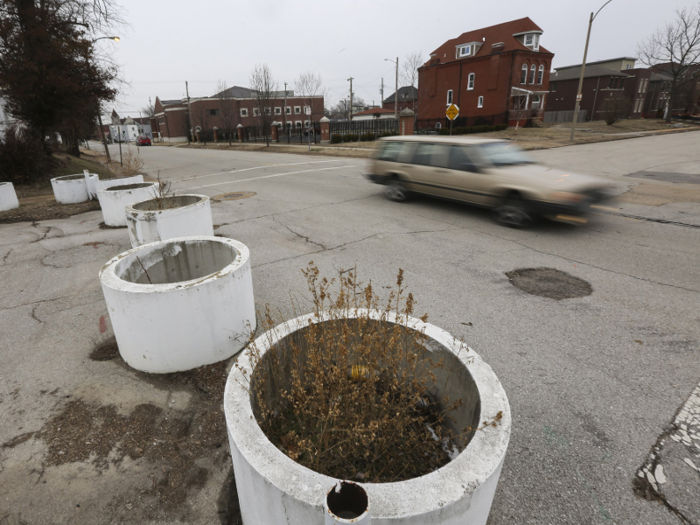
St. Louis has almost 303,000 people, but it lost 5% between 2010 and 2018. Sixty-five percent of people work and one quarter are living in poverty.
The city has had struggled with crime and gun violence. In 2015, killings rose 33% from the year before to 159 deaths. The city has relatively relaxed gun laws, including allowing people to carry loaded guns in cars without permits. Then-Mayor Francis Slay said crime was the No. 1 priority for the city.
48. Pasadena, Texas
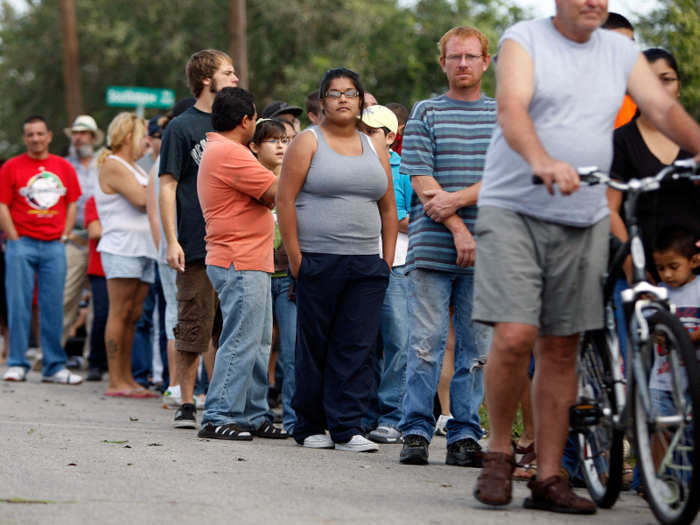
Pasadena has 153,000 people, 65% of whom are working, and one-fifth live in poverty. While the median income is $50,207, nearly 29% of people don't have health insurance.
Mostly working-class, the city is based near petrochemical plants, and is known for its race issues. It used to be home to the Texas headquarters of the Ku Klux Klan. Now, it's divided. In the north it's primarily made up of Latino people and to the south it's mostly white people.
47. Macon-Bibb County, Georgia
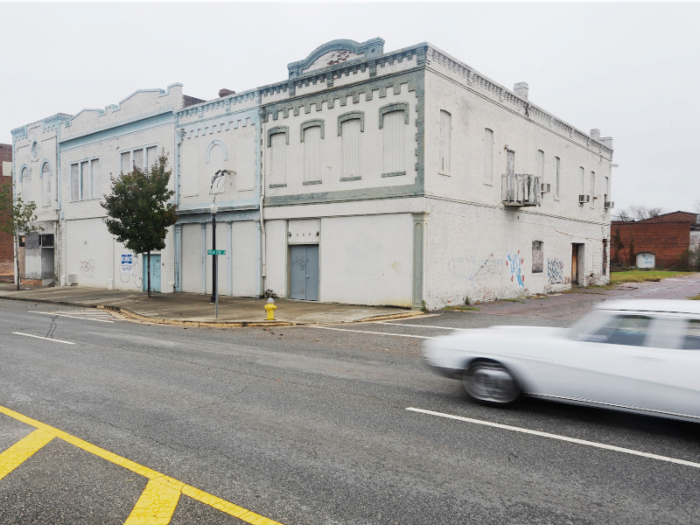
Macon-Bibb County has 153,000 people, but it lost 1.7% of its population between 2010 and 2018. Fifty-six percent are working, and 26% live in poverty.
One of Macon-Bibb County's biggest problems is blight. Across the city there are about 3,700 unoccupied buildings, including dilapidated homes and overgrown yards.
46. Danville, Virginia
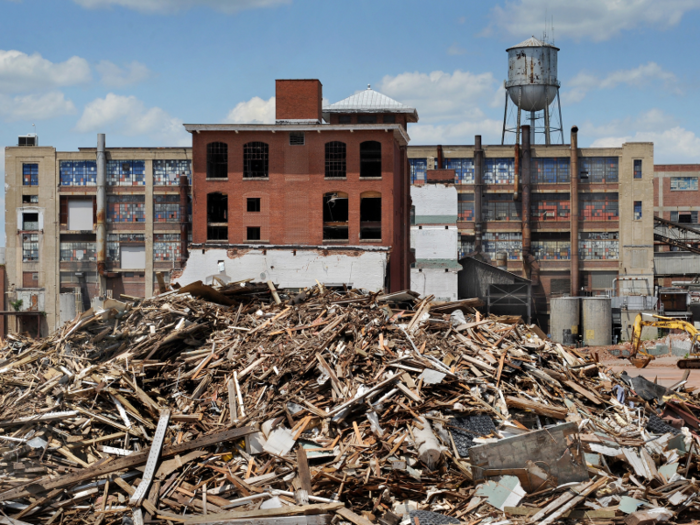
Danville has 40,000 people, but its population fell by 5.5% between 2010 and 2018. Fifty-five percent of people are working and 21% live in poverty.
It used to be one of the richest cities in the Piedmont area. But it's struggled since its tobacco and textile mills shut down. However, the city is fighting for a comeback. It's set up solar farms, and its downtown is in the midst of a rehabilitation to turn abandoned warehouses into mixed-use developments.
45. Shreveport, Louisiana
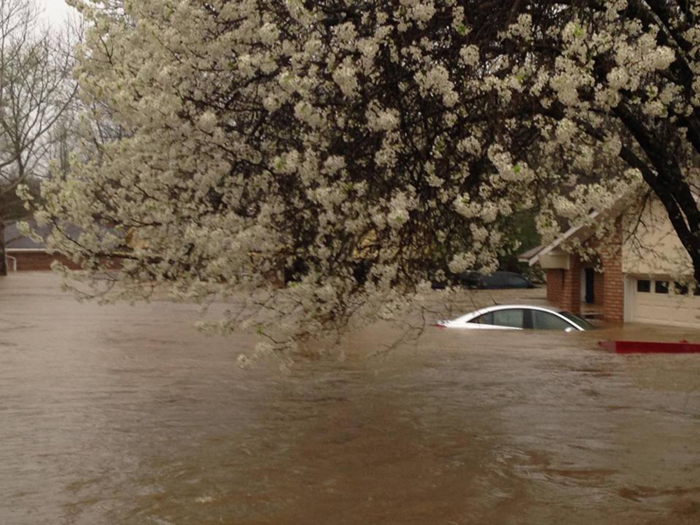
Shreveport has about 189,000 people, and lost nearly 6% of its population between 2010 and 2018. Fifty-eight percent of people work, and 26% are living in poverty.
In 2015, it struggled with floods from the Red River. Its murder rate also doubled from 2015 to 2016, up to 42 murders, and the city also had an increase in other crimes, like rape, robbery, and aggravated assault.
44. Hemet, California
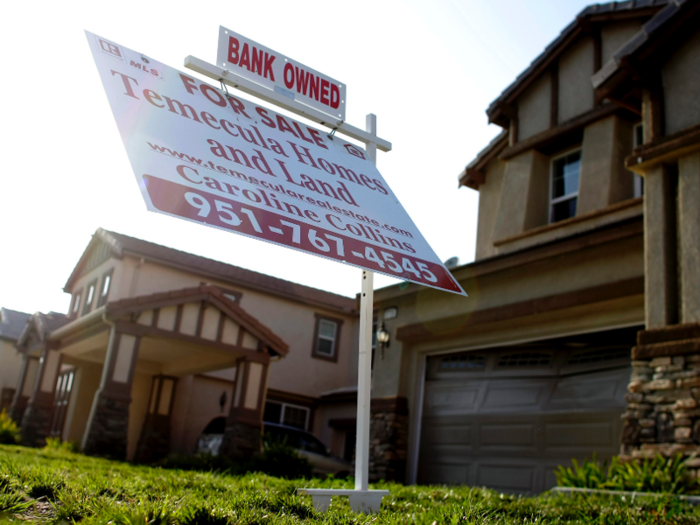
Hemet has a population of 85,000 people and between 2010 and 2018, it grew by 8.5%. However, it's struggled since the 2008 recession. Twenty-three percent of people live in poverty, and crime rates are high. In 2016, 623 cars were stolen, 170 robberies were reported, and police logged 398 aggravated assaults — the most this century.
43. Mansfield, Ohio
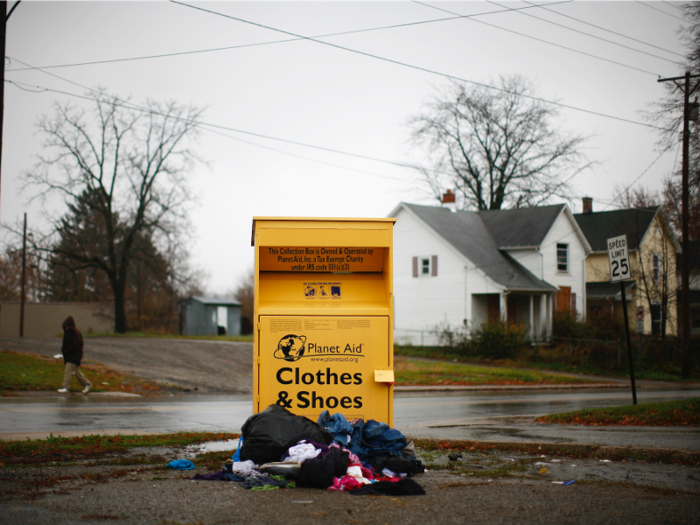
Mansfield has 46,000 residents, but lost 2.7% between 2010 and 2018. Forty-eight percent of people are working, and 24% are living in poverty.
It used to have lots of industrial work, with people making things like steel, machinery, and stoves, but that dried up in the 1970s and 1980s. More recently, in 2010, a GM factory closed its doors, leading to more job losses. It's also had a surge in crime, and between 2012 and 2017, violent crimes rose by 37%.
42. San Bernardino, California
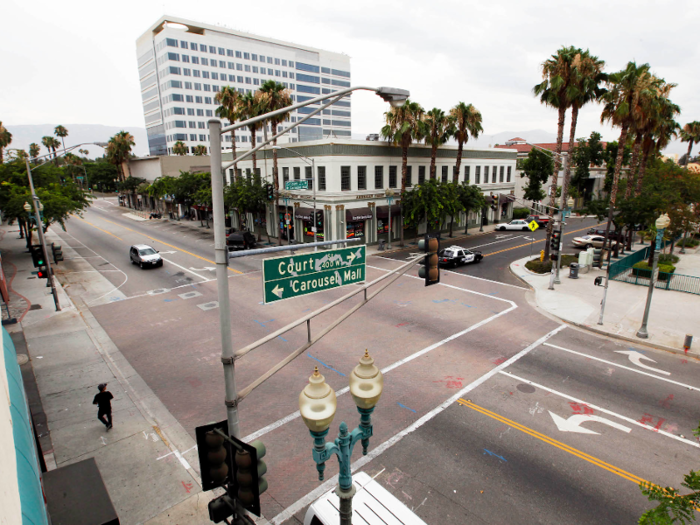
Of San Bernardino's 216,000 residents, 57% are employed, and 30% live in poverty.
It's 60 miles east of Los Angeles, and has an interesting history. It's where McDonalds began, as well as the Hells Angels motorcycle gang. Along with a tough recession, it had a steel plant and an Air Force base close down, meaning even fewer jobs.
41. Compton, California
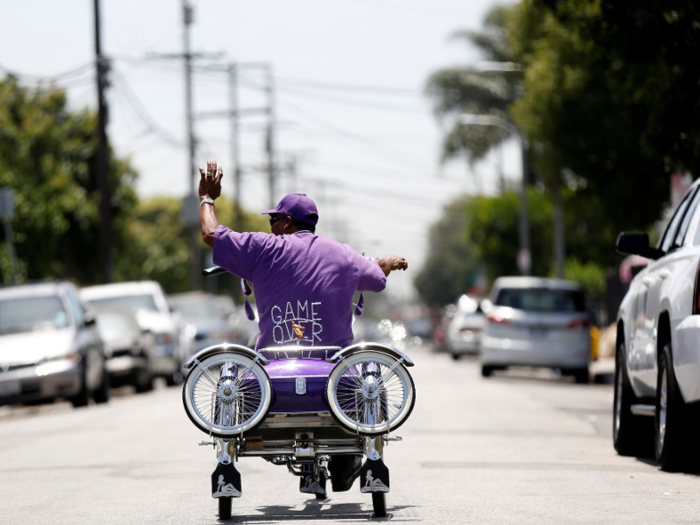
Compton has 96,000 people, 40% of whom aren't working, and 23% live in poverty.
The city struggles with poverty and unemployment. But it's no longer as dangerous as the way it was portrayed in the film "Straight Outta Compton." In 1991 there were 87 murders, and in 2014, it was down to 17.
40. Montebello, California
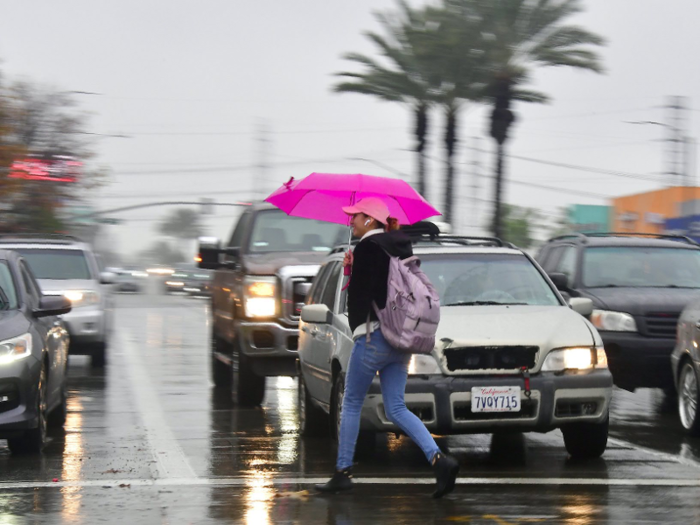
Of Montebello's 62,632 people, 60% are working, and 14% live in poverty. The average commute time is 33 minutes, and 19% of people don't have health insurance.
A big issue is affordable housing. A home-ownership counselor told the New York Times in 2019 that prospects for first-time buyers weren't good, and that opportunities to live there weren't growing.
39. Harlingen, Texas
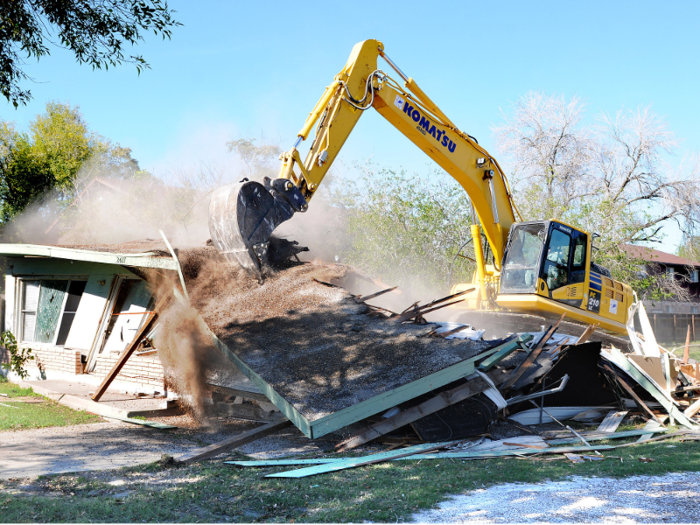
Harlingen has 65,000 residents; 56% are working, and 30% live in poverty.
It's a hot city, with little rainfall, although recently, it's been dealing with flooding. It's also one of three cities where 2,000 immigrants were released in 2019, putting pressure on the city to help them.
38. Reading, Pennsylvania
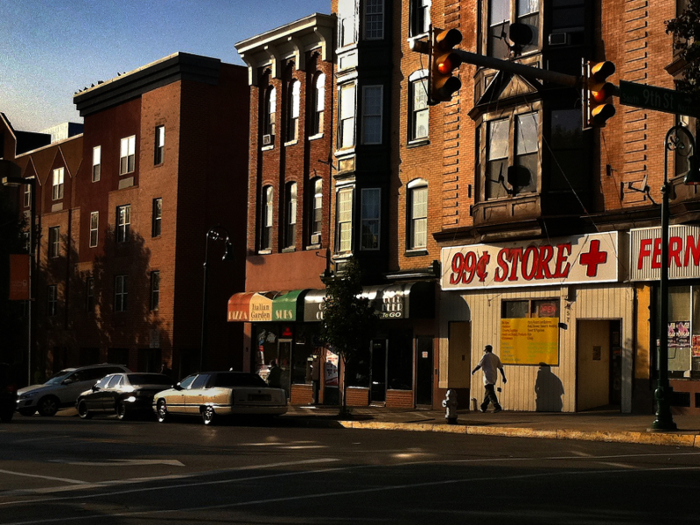
Reading has 88,495 residents, where almost 62% of people are working, and 36% live in poverty. In 2011, The New York Times said it was the poorest city in the US.
Its economy struggled after factories closed down or downsized, laying people off. An estimated 44% of households are on food stamps, among the most in the country.
37. Hallandale Beach, Florida
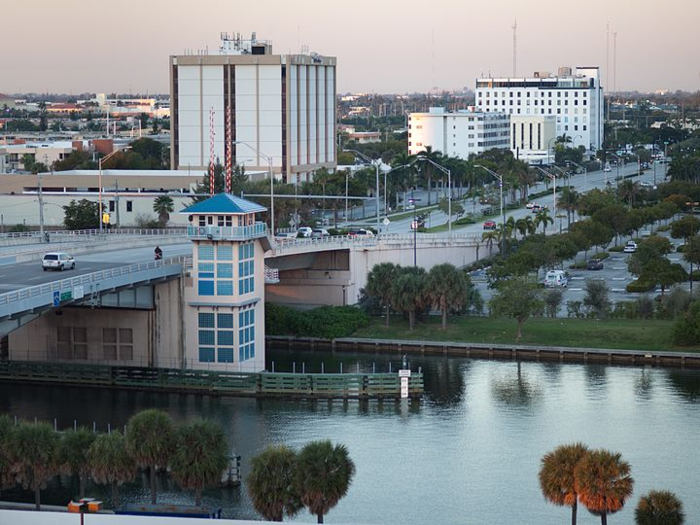
Hallandale Beach has about 40,000 people, 60% of whom are working; 20% live in poverty. More than 29% of people are without health insurance.
Halfway between Miami beach and Fort Lauderdale, it's been called a "once scruffy beach town," by the Wall Street Journal. It also has plenty of strip clubs and has been nicknamed "Hound-ale Beach."
36. Palmdale, California
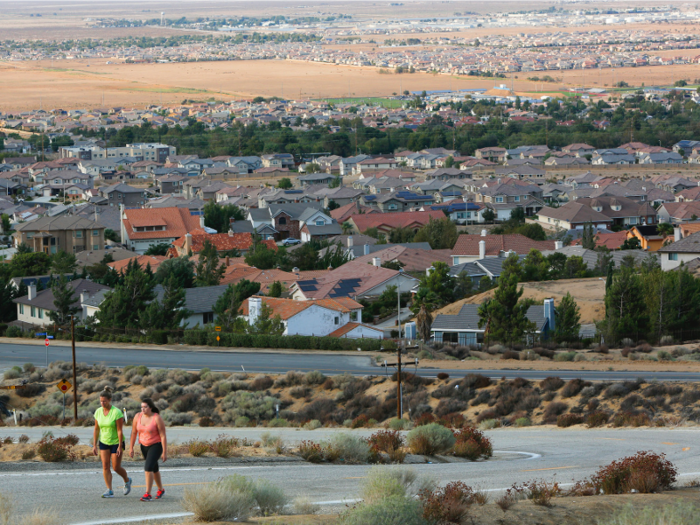
Palmdale has 156,667 people — 59% are in the workforce, and 19% live in poverty.
It also has a median commute time of 42.7 minutes, which is the highest on the list. It was at one point called "the foreclosure capital of California."
35. Anderson, Indiana
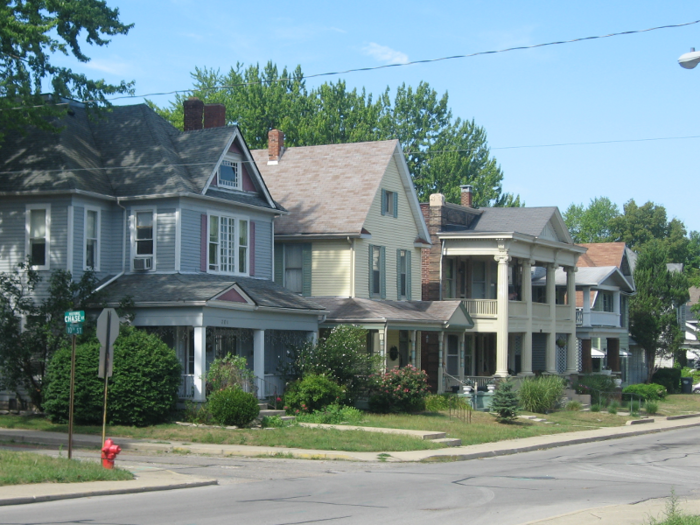
Anderson has 55,000 residents, but lost 2% between 2010 and 2018. Fifty-six percent of people are employed, and one-quarter live in poverty.
Formerly a thriving GM city with 24 factories, things deteriorated when the carmaker closed factories and 23,000 people lost their jobs. It's also been a city that has been dealing with blight. In 2015, the city was given $2.8 million to tear down 100 abandoned homes, and there were hundreds more that could have qualified.
34. Fort Pierce, Florida
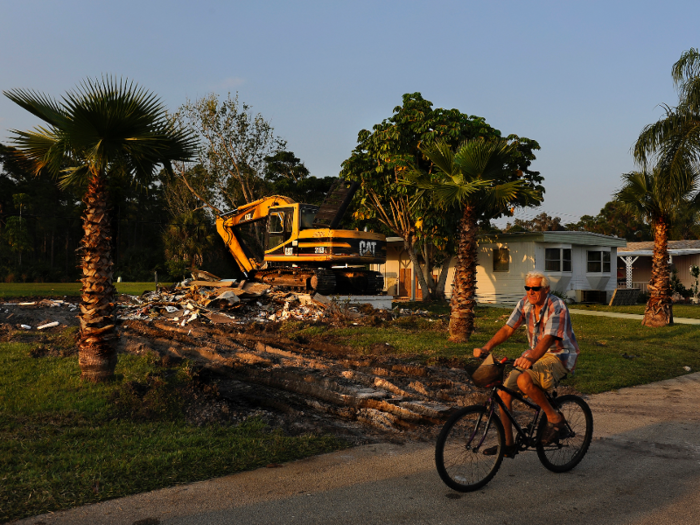
Fort Pierce has 46,000 people, and grew by almost 10% between 2010 and 2018. Just over half of people there are employed, and almost 36% of people in poverty.
This city used to have an economy based around citrus farming, but struggled with diseases and the effects of trade deals. It also has to replenish the sand on its beaches every few years, because of ocean erosion.
33. North Miami Beach, Florida
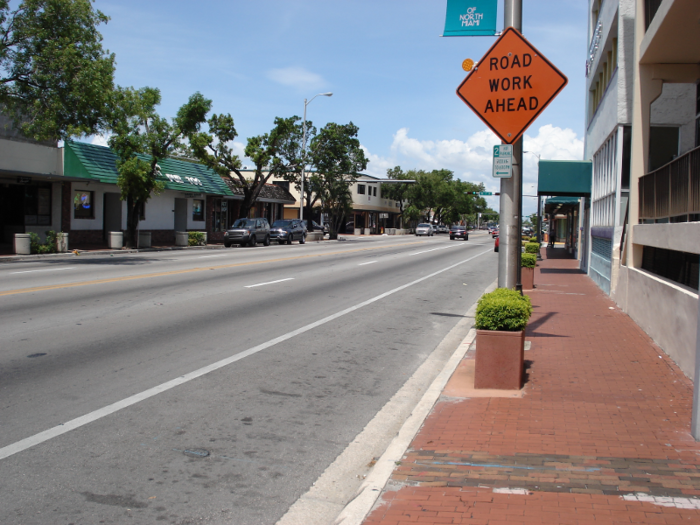
North Miami Beach has almost 46,000 people; 65% are working, and just under 20% are living in poverty. But 32% of residents don't have healthcare, and the average commute time is 31 minutes.
Another issue for living in this area could be the tumultuous politics — two recent mayors have faced criminal charges for their spending.
32. Jackson, Mississippi
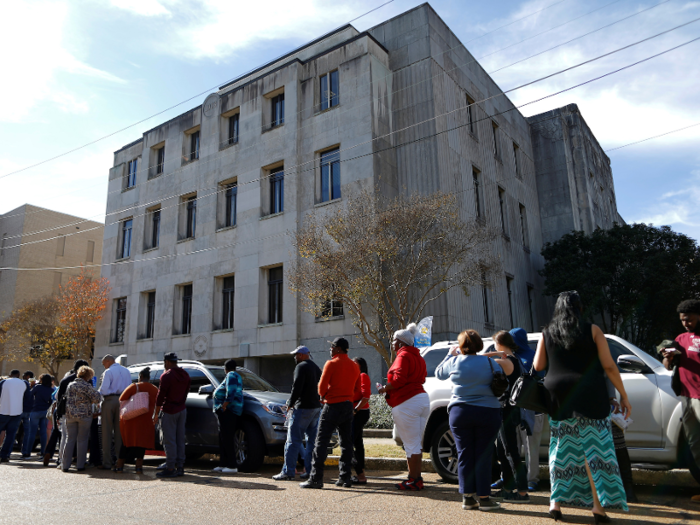
Jackson has almost 165,000 residents, but between 2010 and 2018 it lost more than 5% of its population. Sixty-two percent of the population is working, and almost 29% live in poverty.
In February, the city threatened to cut off water for 20,000 people, because $45 million worth of bills hadn't been paid. Mayor Chokwe Antar Lumumba, elected in 2017, said his goal was to make the city the "most radical" on Earth, by taking on issues like poverty in new ways.
31. Saginaw, Michigan
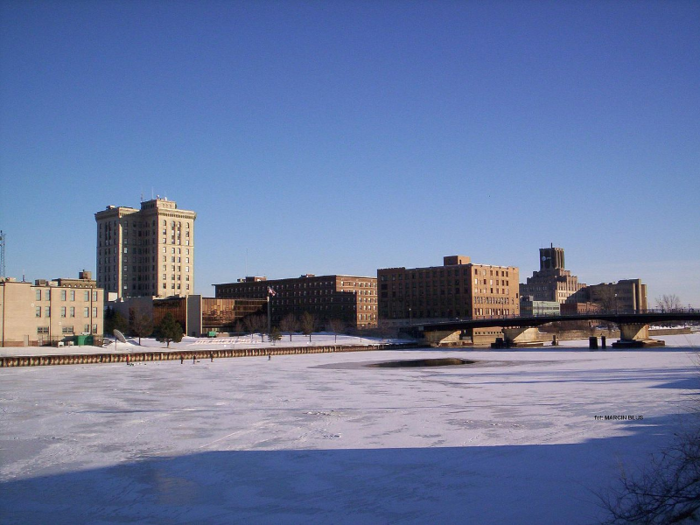
Saginaw has 48,000 people, and between 2010 and 2018 it lost 6% of its population. Fifty-five percent of people are working and nearly 34% are living in poverty.
Like many other cities on this list, it used to have a lot of manufacturing jobs — at one point around 25,000 with General Motors. But they didn't last.
Some locals reportedly refer to the city as "sag-nasty" because of its issues with crime. In May 2019, violent crime had fallen in the city, with 16 shootings to date, compared to 30 at that point in 2018.
30. Plainfield, New Jersey
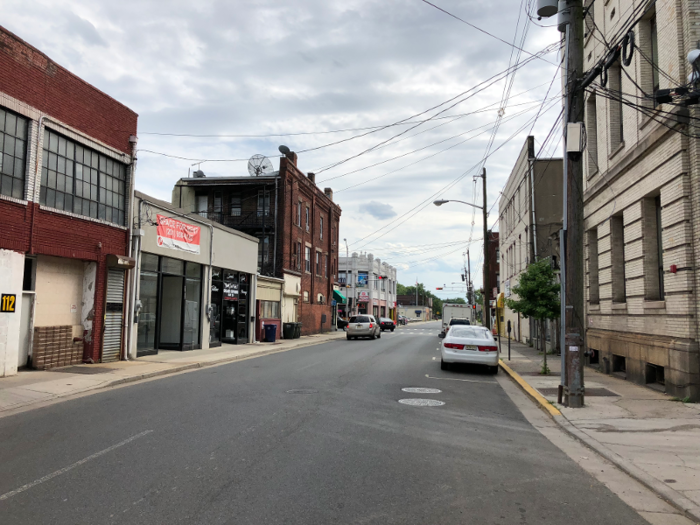
Plainfield has 50,693 people, 70% of whom are working, and one-fifth of whom live in poverty. Nearly one-third are without health insurance, and the median commute time is 31 minutes.
It used to be a violent city — in 1990 there were 719 violent crimes, but since then things have improved, although in 2016 there were 12 murders.
29. West New York, New Jersey
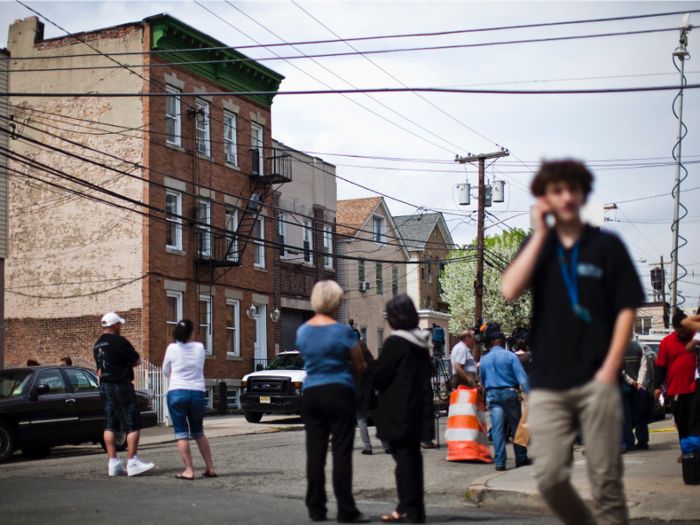
West New York has nearly 53,000 people, and it grew by 6.6% between 2010 and 2018. Almost 70% are working, and 22% are living in poverty.
Cleanliness and parking are meant to be two of the biggest issues for its new mayor. The median commute time is 37 minutes.
28. Miami Gardens, Florida
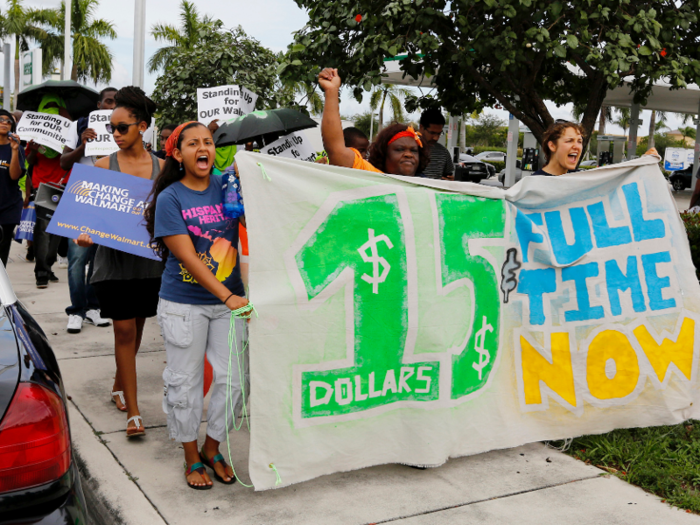
Miami Gardens has 113,000 people — 60% are working, while about 22% live in poverty.
In 2014, it was called the "stop and frisk capital of America," after an investigation showed nearly 57,000 people had been frisked since 2008.
Another issue in the area is the cost of water. Because it comes from a plant owned by the City of North Miami Beach, the cost of living is a little bit higher. In March, the city was suing to fight the extra 25% surcharge.
27. Cleveland, Ohio
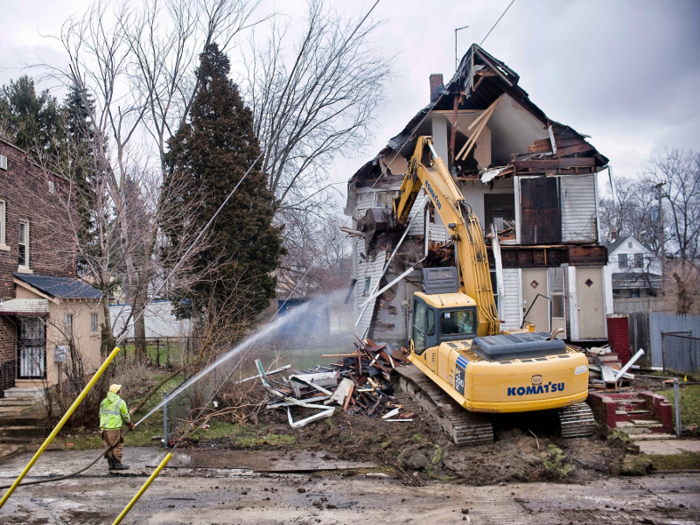
Cleveland, sometimes called the "mistake by the lake", has 384,000 people. Its population fell 3% between 2010 and 2018. Nearly 59% of the population is working, and 35% live in poverty. An August 2019 report found that half of those living in poverty are working.
The city has struggled for years since losing the bulk of its manufacturing industry. In 2010, Forbes said it was the most miserable city in the US. It also had a bad year for gun violence in 2015, with 85 gun homicides.
26. Youngstown, Ohio
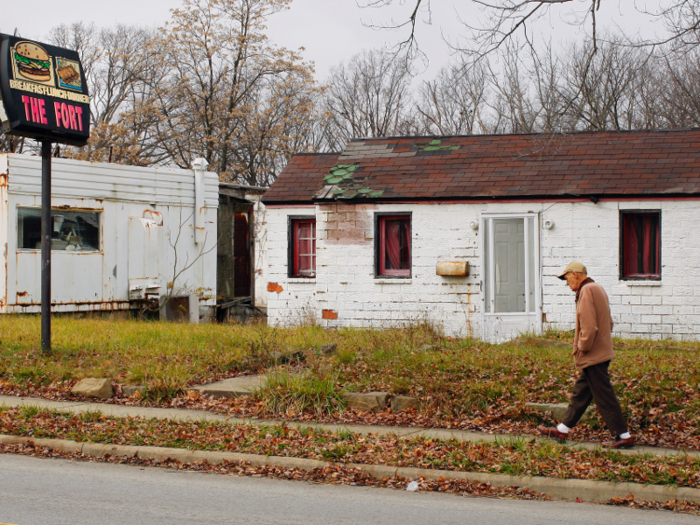
Youngstown has about 65,000 people, and lost 3% of its population between 2010 and 2018. Just over half of its population is working and nearly 37% of people live in poverty.
It used to have a population of 170,000, and was the third biggest steel producer in the United States, until the factory began downsizing from 1977 onward. It was also recorded as having some of the worst air pollution in Ohio in 2017.
25. North Miami, Florida
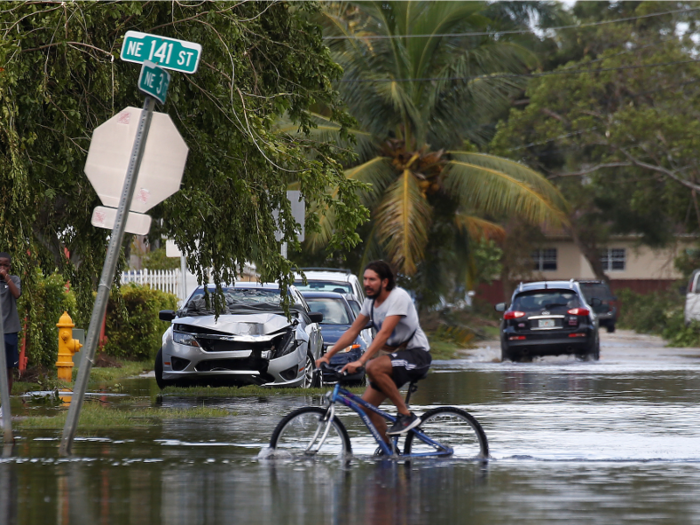
North Miami has about 63,000 people, 65% of whom are working, while 23% in poverty.
One of the big issues it faces is flooding, even when it doesn't rain. Sometimes, all that's necessary for flooding is a full moon. It is also facing problems around septic tanks (the city has 2,780) that soon might not be able to operate properly, because of rising sea levels. This could result in wastewater ending up in yards and other places it's not meant to be.
24. Huntington, West Virginia
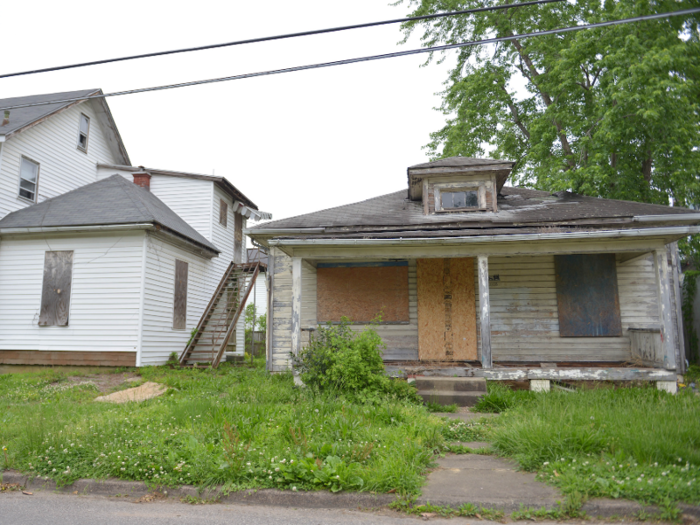
Huntington has 46,000 people, and it lost 6.4% of its population between 2010 and 2018. Just over half are working, and about a third live in poverty.
Formerly a thriving coal mining town with 90,000 people in 1950, it has since fallen on harder times. In 2008, the city was described as the unhealthiest in America. The severe opioid crisis has led Huntington to be named America's overdose capital. But overdoses have fallen since 2017.
23. Hammond, Indiana

Hammond has about 76,000 people, and its population fell by 6.2% between 2010 and 2018, Sixty-one percent of people are in the labor force, and 22% live in poverty.
A 2014 study found the city was one of the most industrial in the state, and as a result had problems with air and water pollution. Lead contamination has been a particular concern for residents.
22. El Monte, California
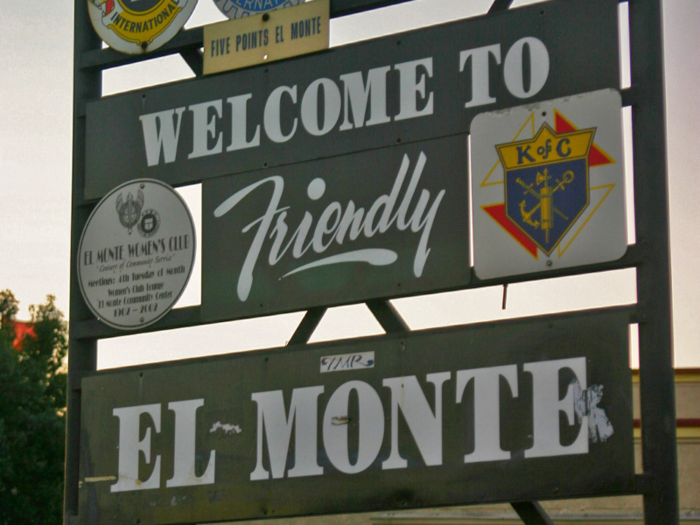
El Monte has 115,000 residents; 58% of its population is working, and 22% live in poverty. The average commute time is a half hour.
The city, which is located near two freeways and close to Los Angeles, had a lot of revenue coming in from car dealerships, but struggled during the recession, when three dealerships closed, and the city's tax revenue fell. It's continued to have issues with finances, and the city is now divided over the future of marijuana production — one large facility in particular.
21. Lynwood, California
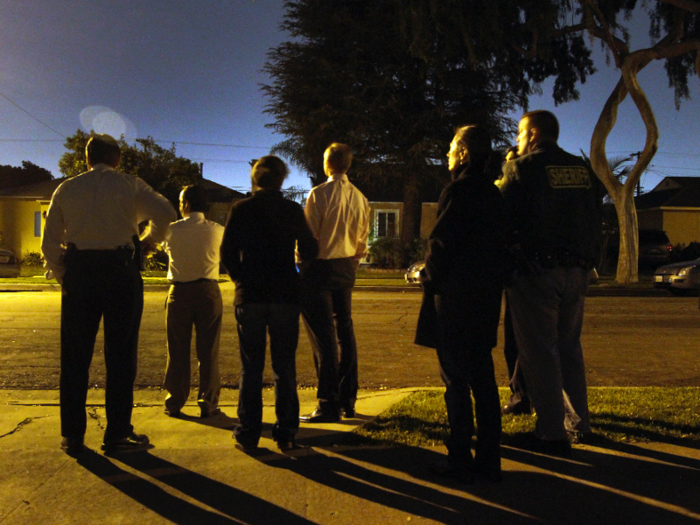
Lynwood has 70,500 residents — 60% work and 23% are impoverished. It was once called "the best place to live best." But things didn't stay that way.
The construction of Interstate 105, which cut right through the city, caused many to leave their homes, and 1,000 homes and businesses to be knocked down. More recently, officials have struggled to manage the city's finances, resulting in losses that could have been used to help the city.
20. Huntsville, Texas
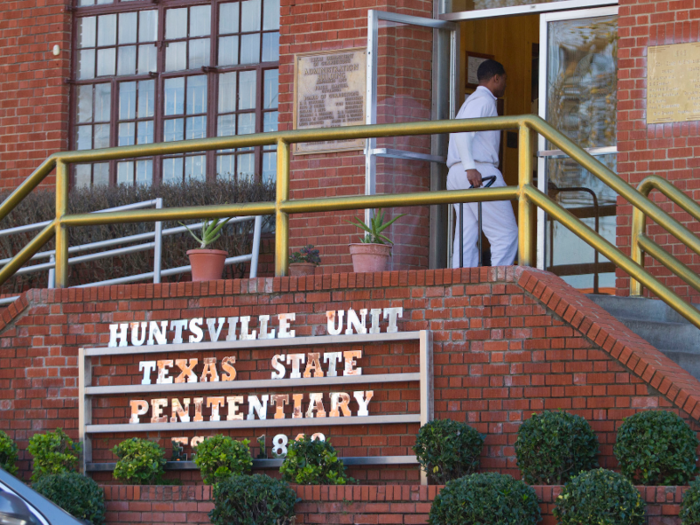
Huntsville has 41,500 residents; 39% of its people are working, and almost 35% live in poverty. However, the low employment is in part because those living in prisons are counted in the city's population.
The Department of Criminal Justice is the city's biggest employer, providing nearly 7,000 jobs. Since 1999, Texas' executions have been done exclusively out of Huntsville.
19. Paterson, New Jersey
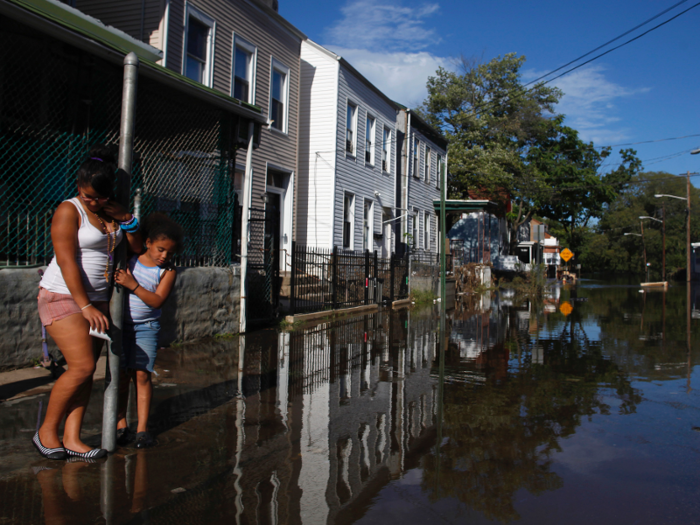
Paterson has 145,000 residents, 57.5% of its population is working, and 29% live in poverty.
It used to produce silk in the 19th century, but it's since struggled. In a cruel twist of fate, the Great Falls, which was used to power factories, ended up flooding the city after Hurricane Irene in 2011.
Between 2009 and 2016, the city's tax revenue fell by 38%. It's also had problems with blight — at one point it had 1,250 abandoned homes, but that dropped to 770 in 2016.
18. Albany, Georgia
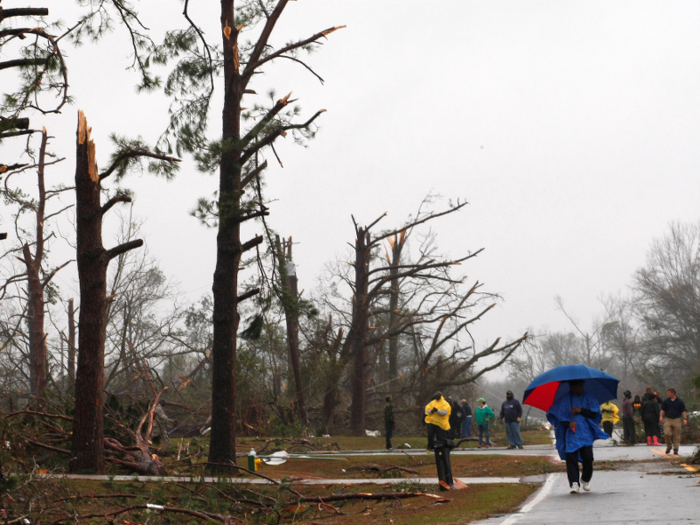
Nicknamed "the good life city," Albany has 75,000 people, although its population fell by almost 3% between 2010 and 2018. Nearly 58% of the population is working, and a third live in poverty.
Along with poverty and crime, it also has been dealing with severe damage and ruined crops from a severe tornado and Hurricane Irma in the last few years.
17. Trenton, New Jersey
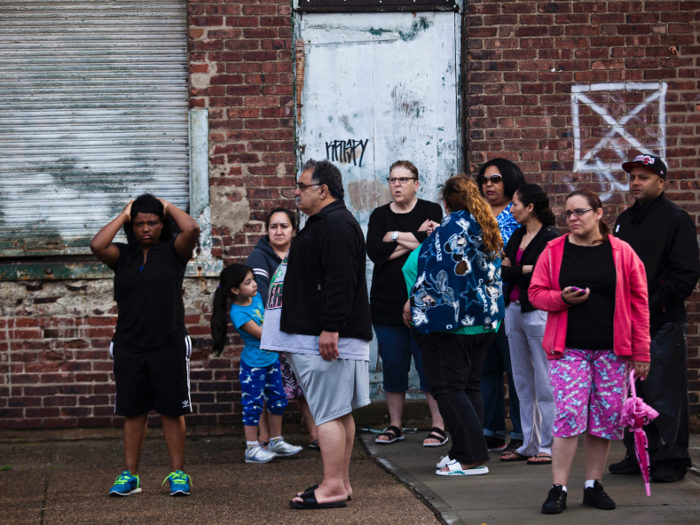
Trenton has a population of 84,000. Almost 60% of people are working, and 27% are living in poverty.
It used to be an industrial city with a catchphrase, "Trenton makes, the world takes," but has since fallen on harder times. Its violent crime isn't increasing, but neighborhood gangs have been known to fight each other, and gun violence is a problem.
16. Cicero, Illinois
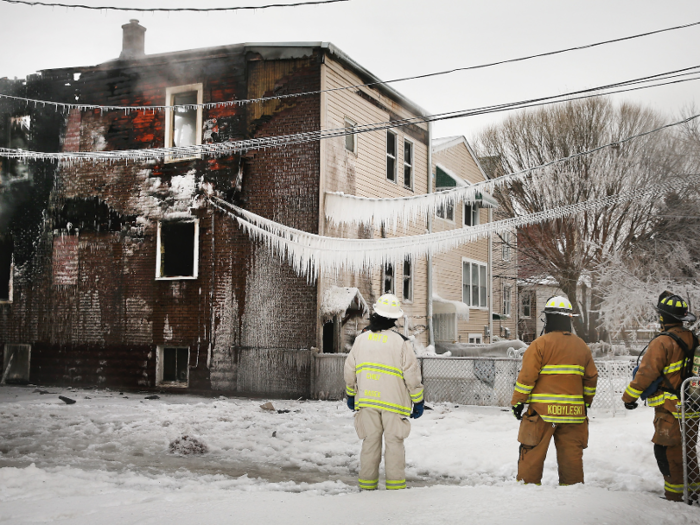
Cicero has 81,500 residents, but that fell by 3% between 2010 and 2018. Two-thirds of people are working and just under 20% live in poverty. The median commute time is 31 minutes.
It's known for being Al Capone's "private playground" back in the 1920s, and since then, the city has fought the nickname and crime. In 1999, the city even voted to make gang members leave within 60 days, or face a daily $500 fine.
15. Union City, New Jersey
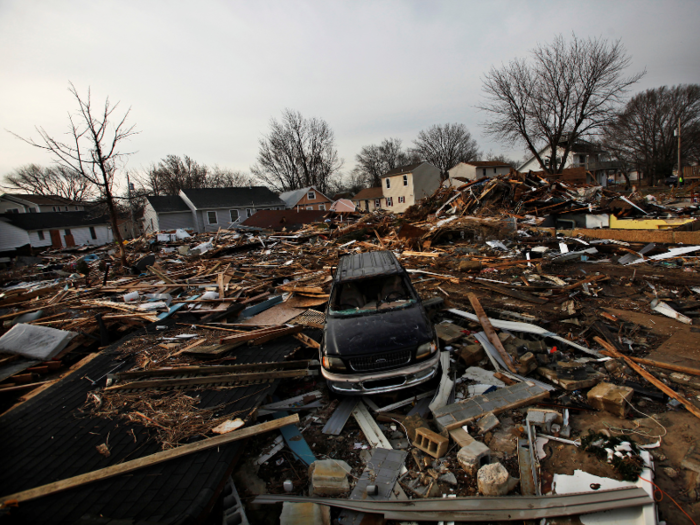
Union City has 68,500 residents, almost 70% are working, while 23% live in poverty. The average commute time is 33 minutes long.
The city is known by some as "Havana on the Hudson," due to 80% of its residents identifying as Hispanic, many of whom fled from Cuba. It's only 1.28 square miles, making it one of the most densely populated areas in the US.
14. Bell Gardens, California
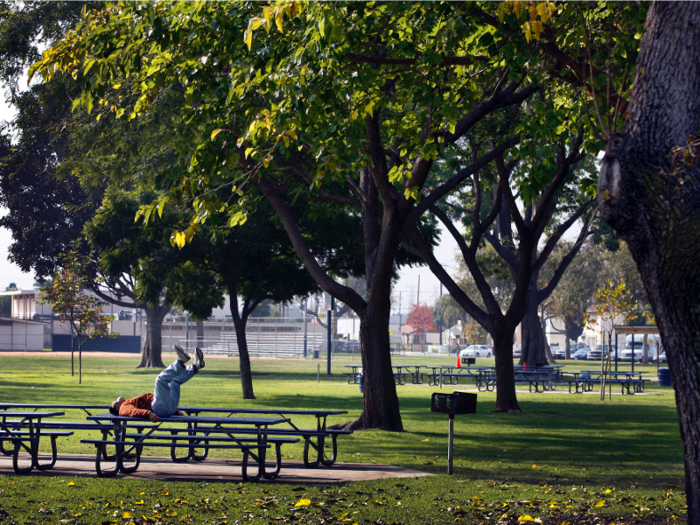
Bell Gardens has 42,300 residents; 63% of people working, and almost 30% are living in poverty.
According to a city official in 1991, the problem with the city was too many people. The city has had to depend on a casino for much of its tax revenue — in 2002, it provided more than half.
13. Hialeah, Florida
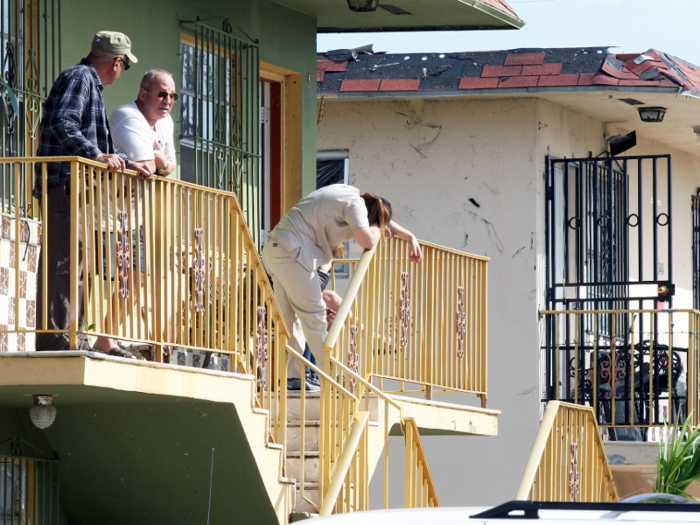
Hialeah has 239,000 residents — 56% of whom are working, while almost 26% live in poverty. Nearly 31% don't have health insurance.
With a primarily Hispanic population, it's one of the least diverse cities in the country. It's also been rated as the worst city in the US for having an active lifestyle.
12. Brownsville, Texas
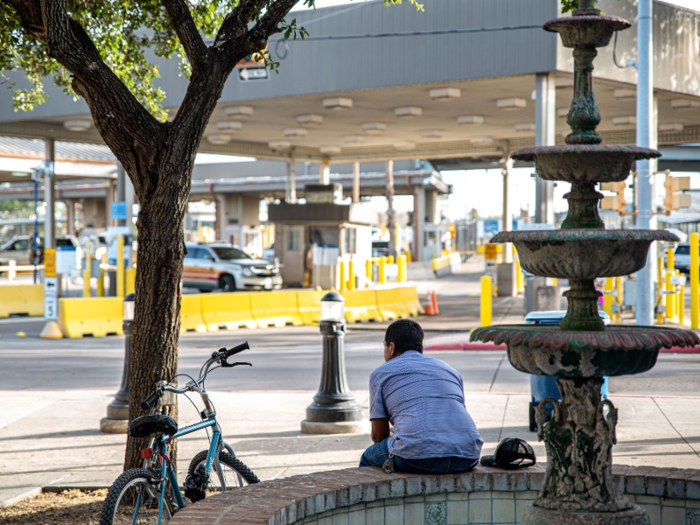
Brownsville has 183,000 residents, 56% of people are working, and more than 31% of people are living in poverty. More than 35% don't have health insurance.
The city is on the Mexican border, and often has unauthorized immigrants passing through, making it one of the most patrolled places in the country. According to locals, three different types of helicopter fly overhead. Concern around immigration has also made it difficult for some residents to sell their properties.
11. New Brunswick, New Jersey
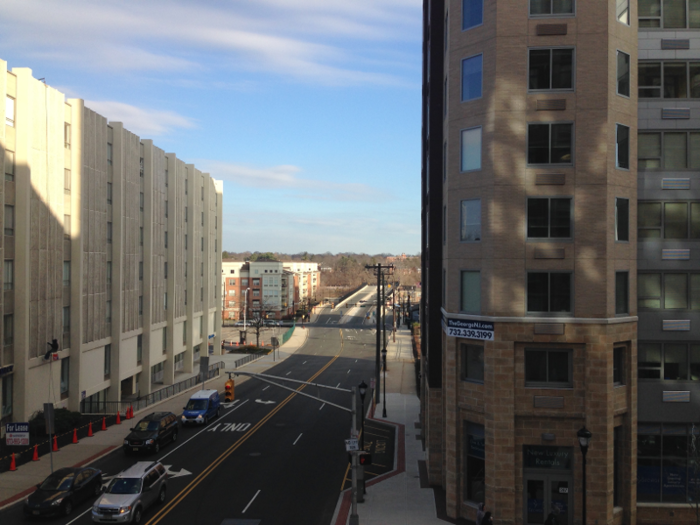
New Brunswick has 56,000 residents, 54% of people are working, and 35% are living in poverty. It has had problems with crime – In 2017, the city's assaults with guns rose 64%.
10. Huntington Park, California
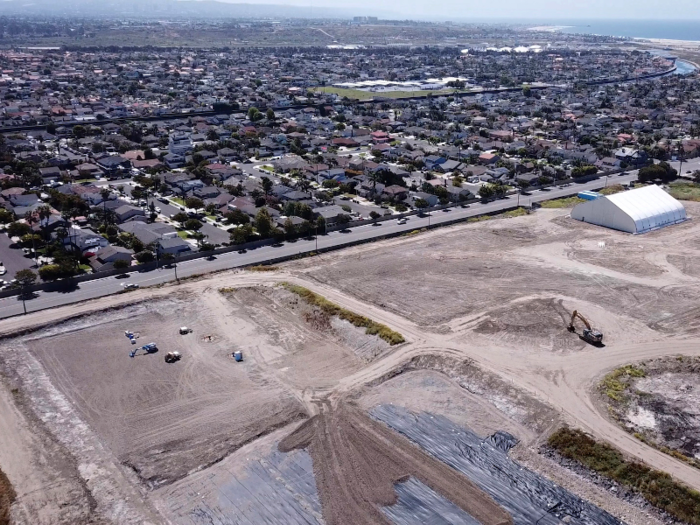
Huntington Park, the 10th most miserable city in the US, has 58,000 residents, 63% of people are working, and 28% of people live in poverty. The median commute time is 31 minutes.
It has a checkered history with waste management. A former waste disposal facility situated in the community is being cleaned up, but work was suspended after residents complained about dust and the smell.
9. Warren, Ohio
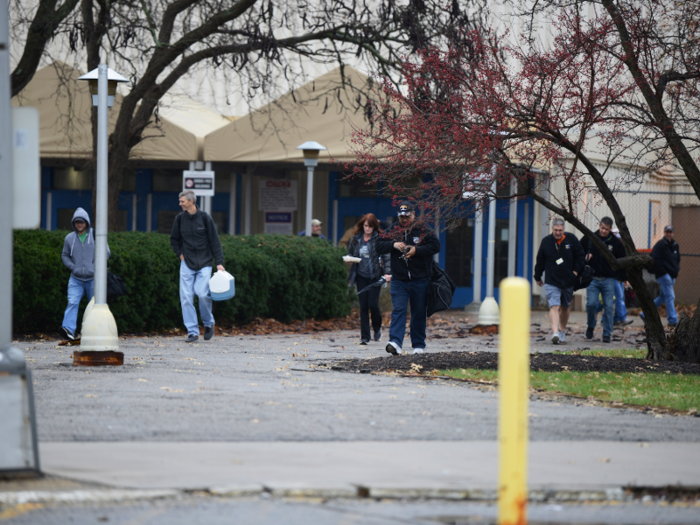
Warren has 38,000 residents, and its population fell by 7.7% between 2010 and 2018. About half of people are working, and two-thirds live in poverty.
It's had a slow economy for a while, but things weren't helped when General Motors announced in 2018 it would stop work in a plant nearby, meaning people had to leave the city to find work. Along with Youngstown, Warren has the second highest rate of people struggling to find enough food in the country.
8. Camden, New Jersey
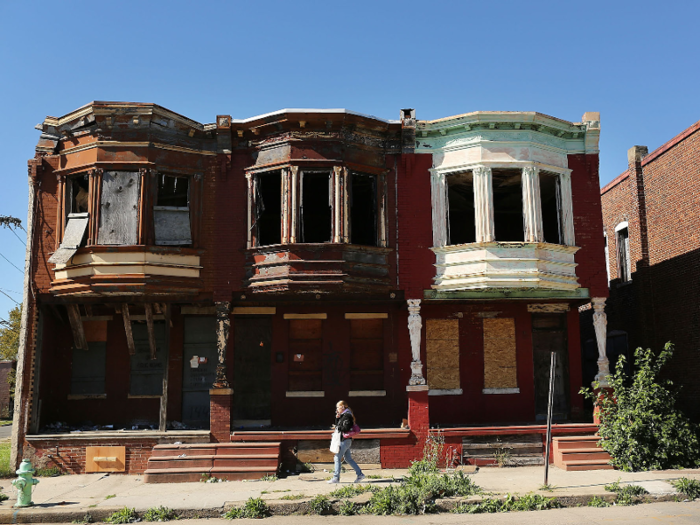
Camden has 74,000 residents, and its population fell by 4% between 2010 and 2018. Nearly 57% of people are in the work force, and 37% live in poverty. The average household income is $26,105 — the lowest on this list.
It used to be a manufacturing city, but that fell to pieces between the 1950s and 1970s. It's had a high crime rate and been known as one of the most dangerous cities in the country, but it is improving. In 2017, there were 22 murders, which was the lowest number since 1987, thanks in part to new police procedures.
7. Flint, Michigan
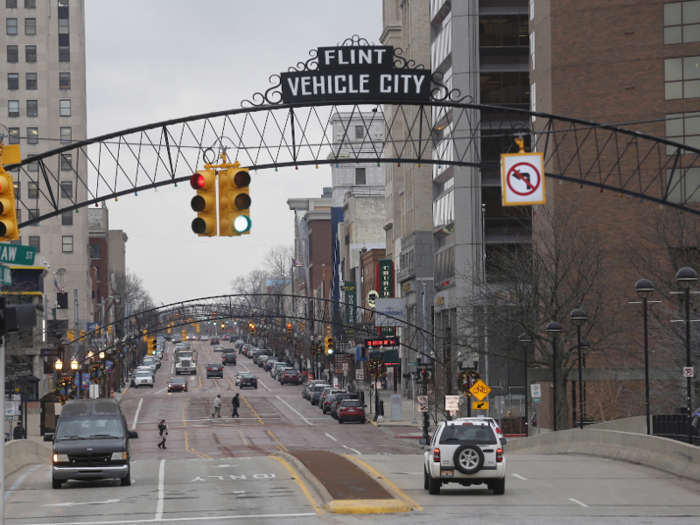
Flint has 96,000 residents, and it's fallen by 6% between 2010 and 2018. Just over half of people are working, and 41% of people are living in poverty — the highest on this list.
The city has struggled with a decline in manufacturing. By 1990, General Motors had downsized in the area, leaving many without jobs.
Flint is perhaps best-known for the water crisis it's been facing since 2014, where residents were being poisoned with lead. On top of that, it's got 20,000 abandoned properties to deal with, a consistently high murder rate, and an opioid problem.
6. Pine Bluff, Arkansas
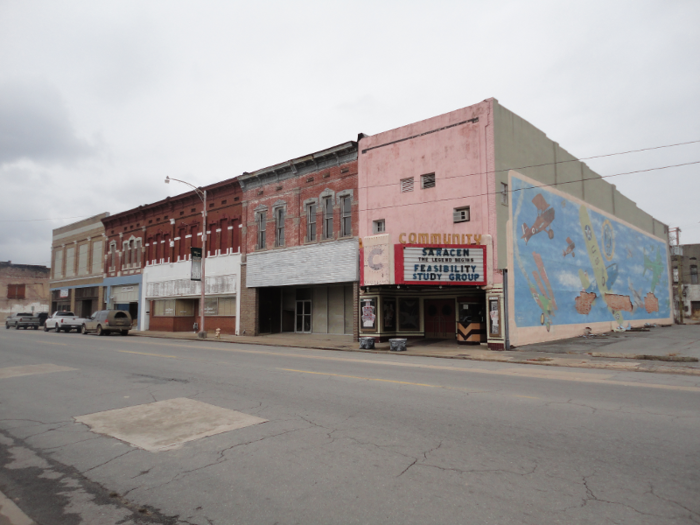
Pine Bluff has 42,000 residents, and between 2010 and 2018, it lost nearly 14% of its population — the biggest loss on this list. Fifty-two percent of people are working, and 30% are living in poverty.
People have been leaving due to the state losing almost 3,000 manufacturing jobs between 2016 and 2017. In 2019, things deteriorated further when the Arkansas River flooded the city.
5. Newark, New Jersey
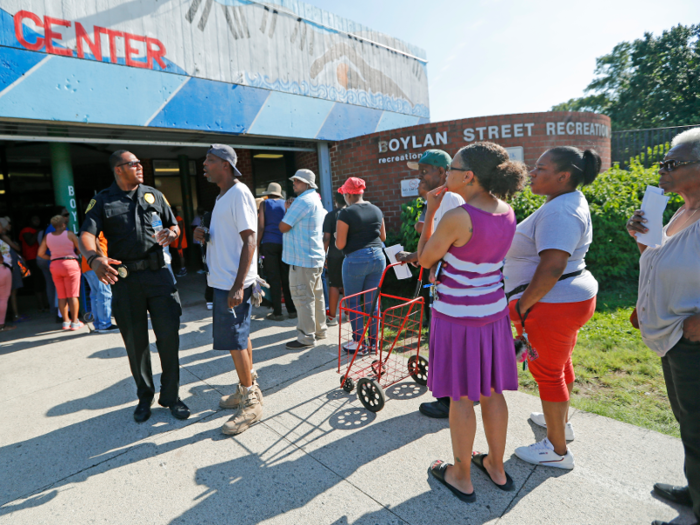
Newark has 282,000 residents, 62% are working, and 28% are living in poverty. The median commute time is over 35 minutes long.
Like Flint, it's had problems with lead poisoning its water supply. The city has also struggled with race relations, which bubbled up in violent riots in 1967, and has it's fair share of violent crimes, particularly in 2013.
4. Passaic, New Jersey
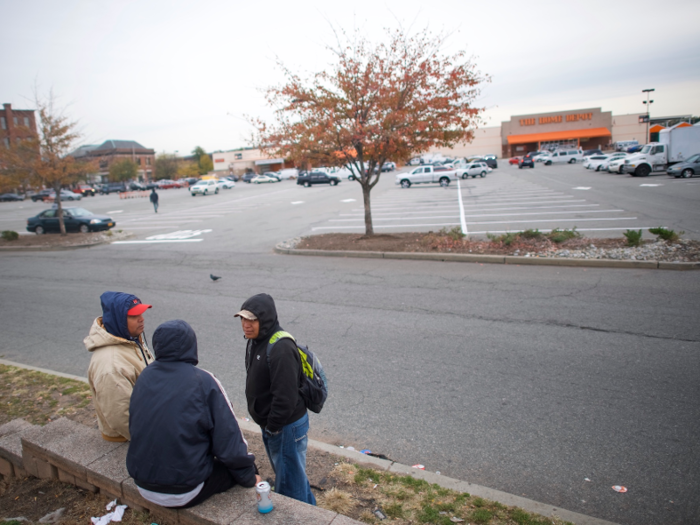
Passaic has 70,000 residents — 58% of people working, and a third are living in poverty.
Its youth council said the city has problems with drugs, violence, and poor sex education.
3. Detroit, Michigan
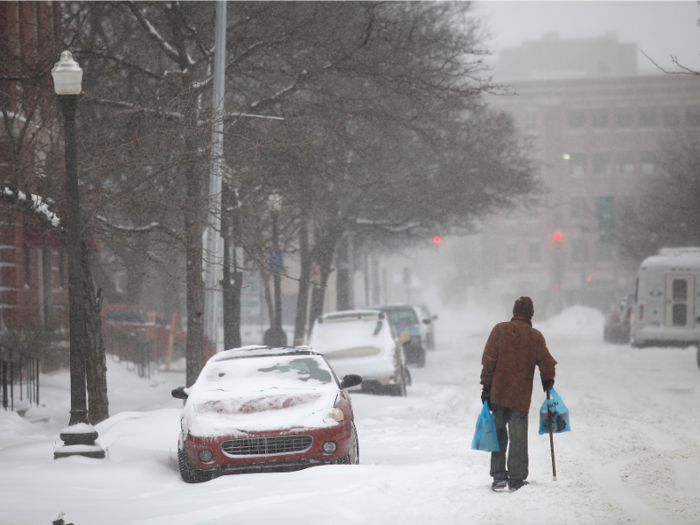
Detroit has 672,000 people, and between 2010 and 2018, it lost nearly 6%. While 54% of people are working, 38% live in poverty. The median household income is $27,838.
The city already lost many of its residents between 1950 and 1980, when 600,000 people left after the manufacturing industry collapsed. With 43,000 abandoned homes, it's been struggling with blight, and is considered one of the most dangerous cities in the United States.
2. Port Arthur, Texas
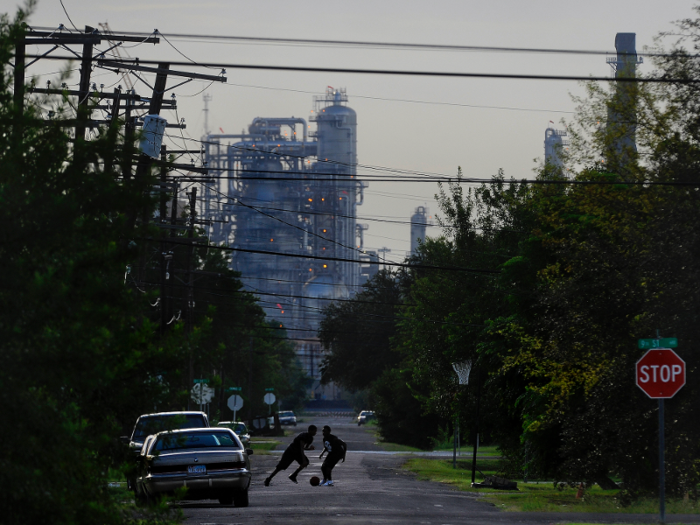
Port Arthur, a city surrounded by oil refineries, has 55,000 residents. Fifty-three percent are working and 30% are living in poverty.
The city was hit by hurricanes in 2005, 2008, and 2017. Harvey, the latest, caused $1.3 billion in damage. Officials fear that if people keep leaving, Port Arthur will fall below 50,000 people and make it ineligible for federal grants.
1. Gary, Indiana
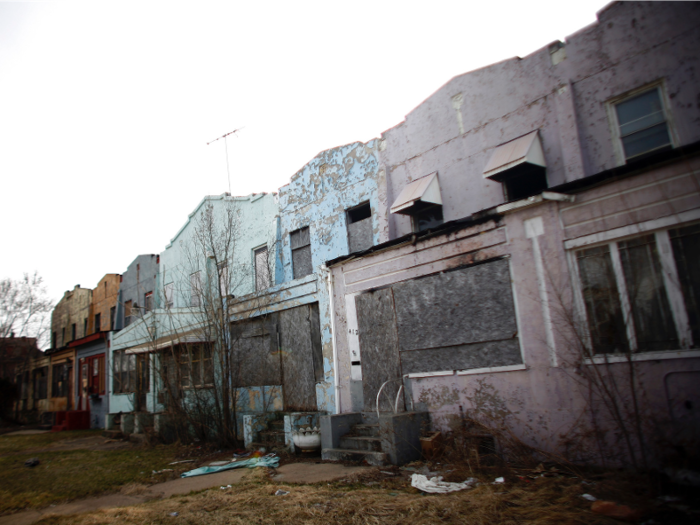
Gary has 75,000 residents, but lost 6% between 2010 and 2018. Just over half of the population works, and 36% live in poverty. The most miserable city in the US was once a manufacturing mecca, but those days are over.
A drug enforcement agent who grew up in the area told The Guardian in 2017: "We used to be the murder capital of the US, but there is hardly anybody left to kill. We used to be the drug capital of the US, but for that you need money, and there aren't jobs or things to steal here."
When the jobs dried up, most white people left, and now 84% of people living in Gary are African American. The city is experimenting with number of plans to try and revitalize the area, including selling abandoned homes for $1.
Popular Right Now
Popular Keywords
Advertisement